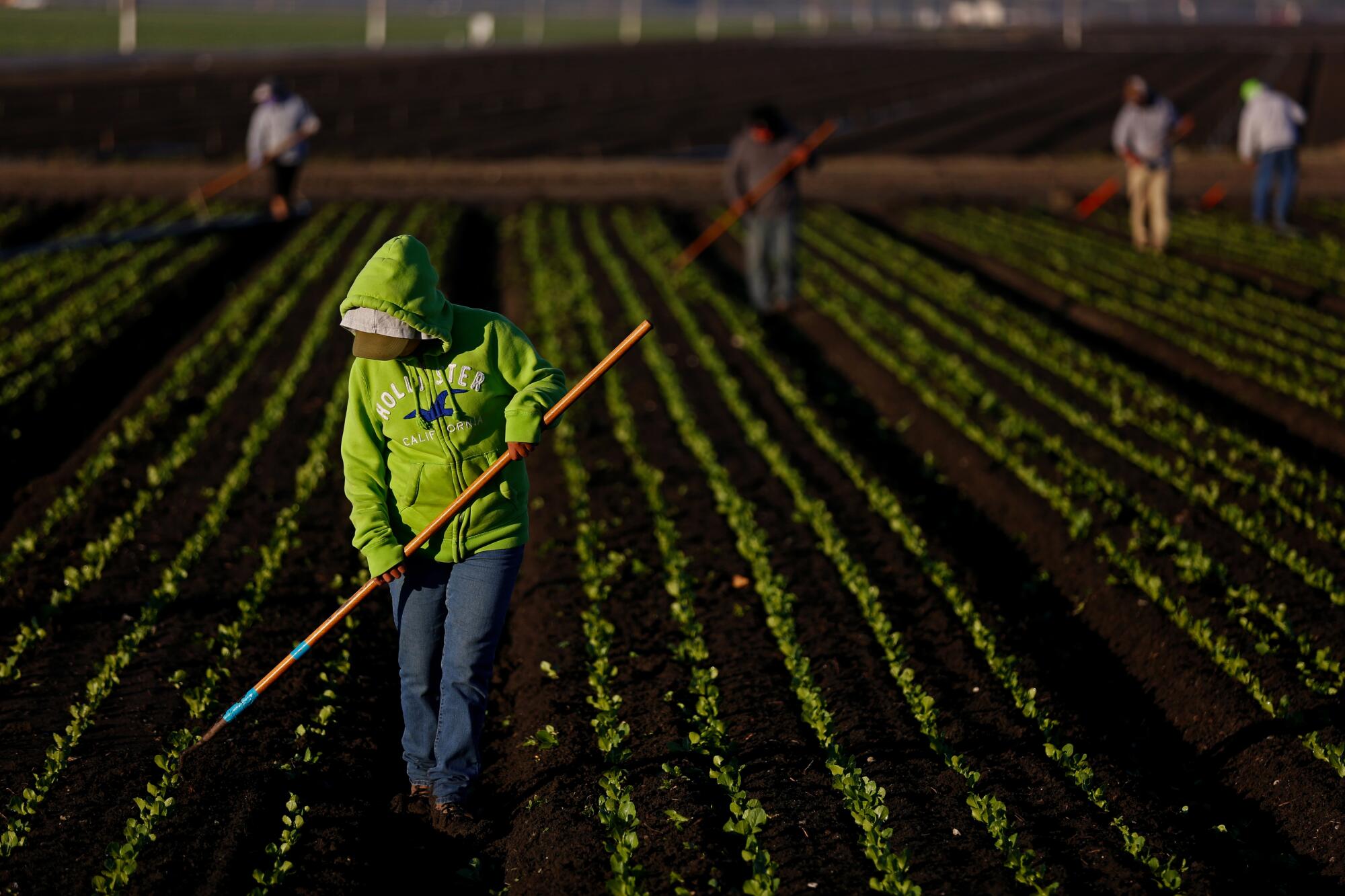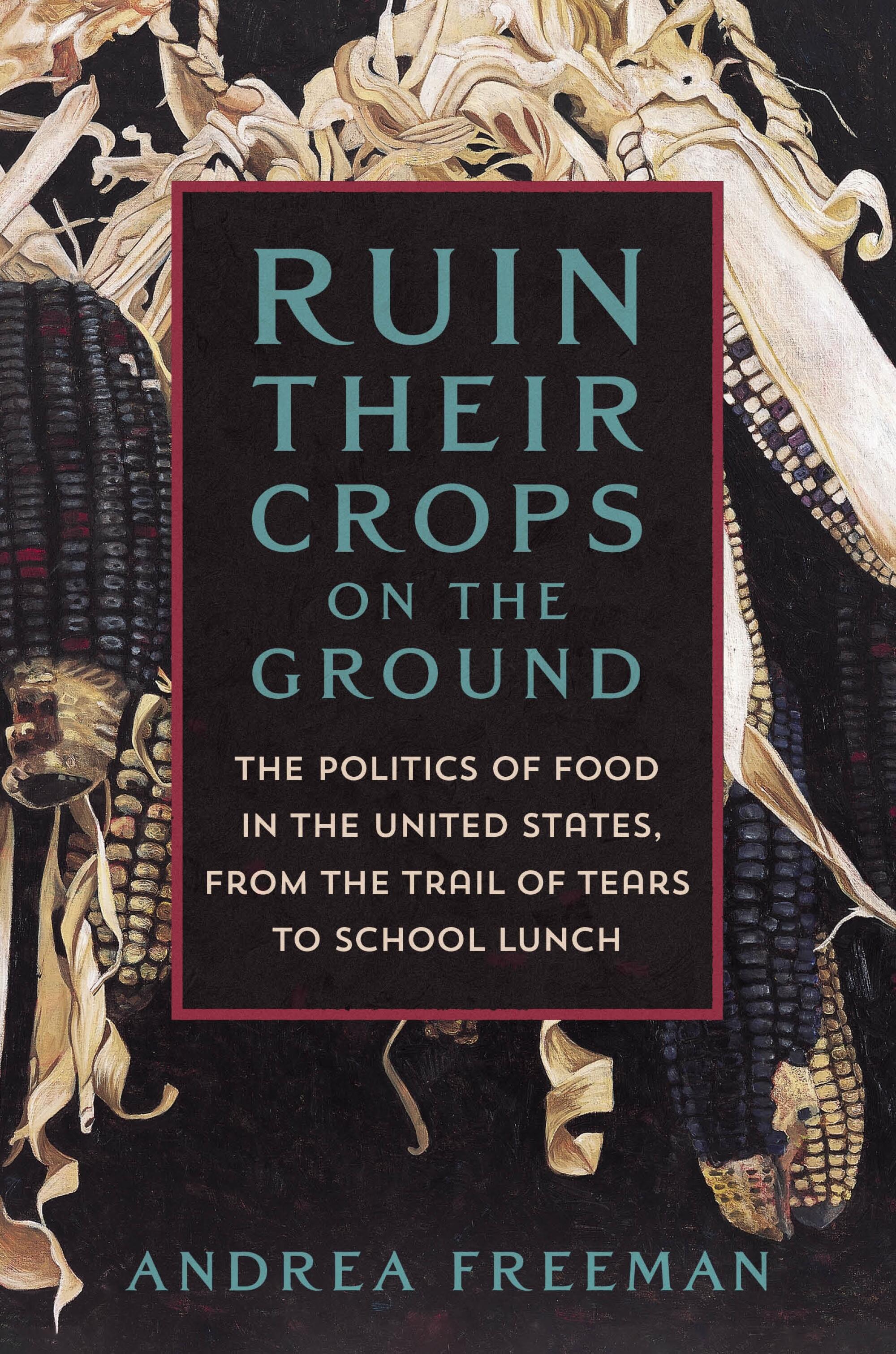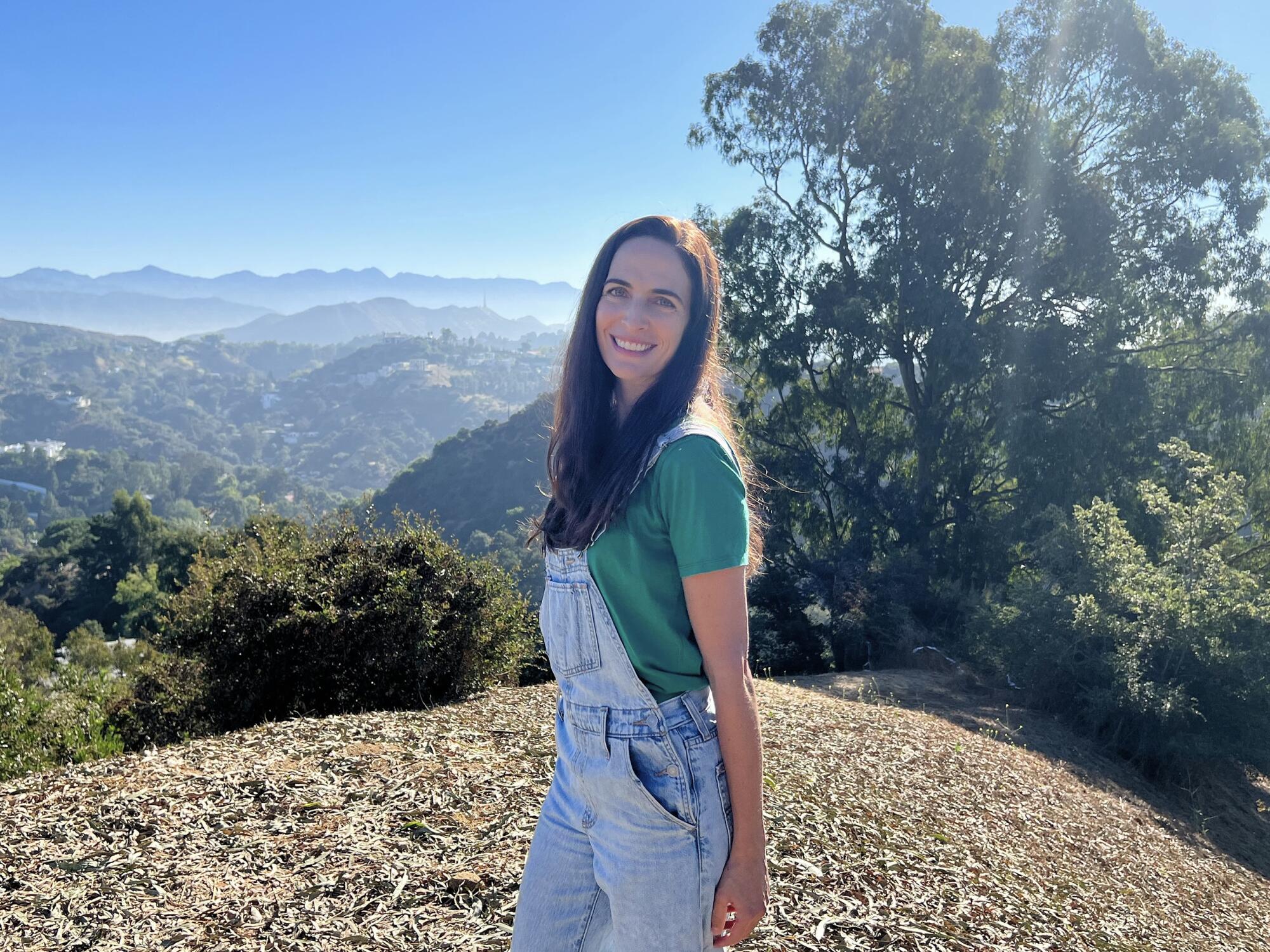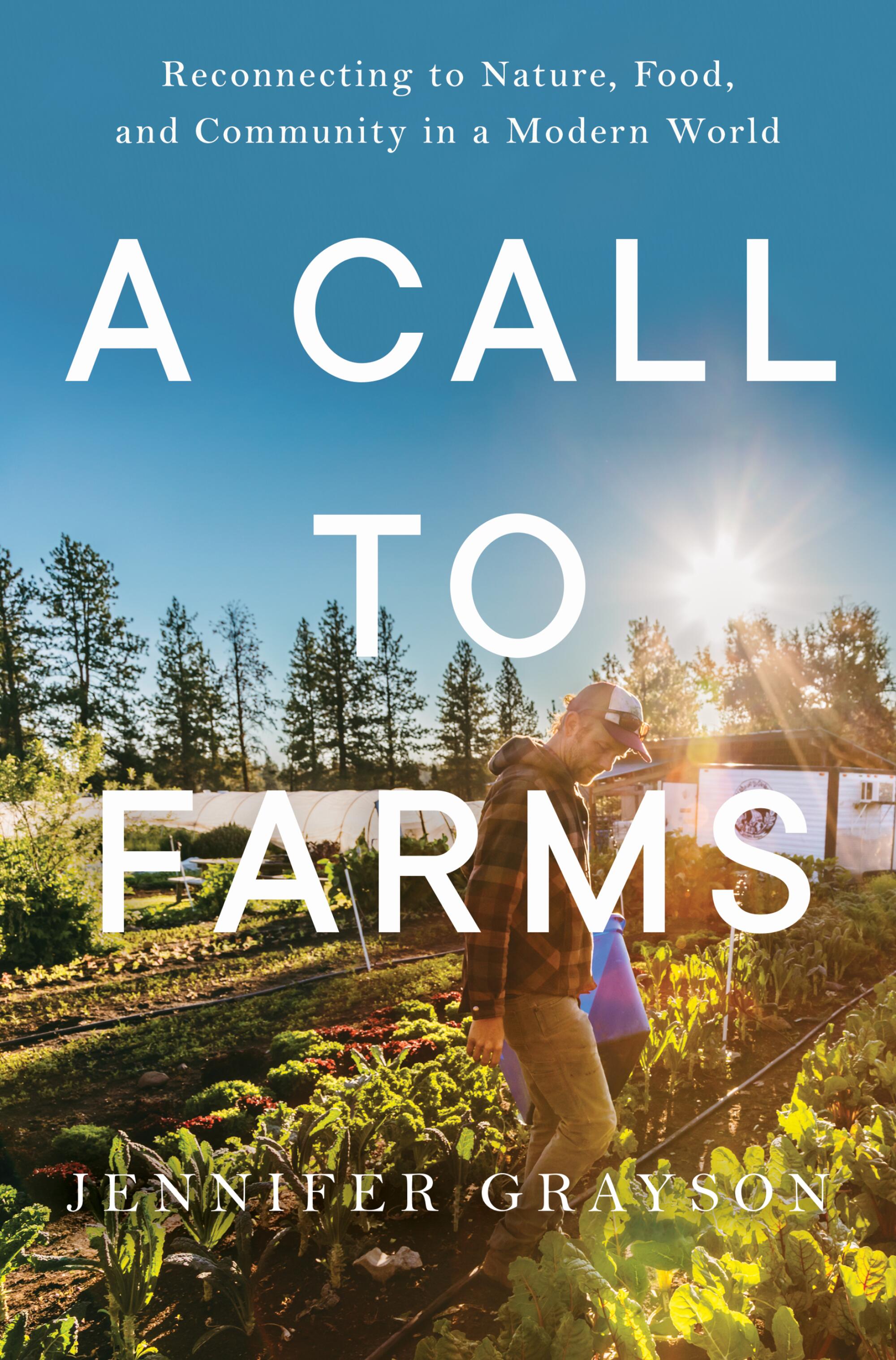
- Share via
Book Review
Ruin Their Crops on the Ground: The Politics of Food in the United States, from the Trail of Tears to School Lunch
By Andrea Freeman
Metropolitan Books: 272 pages, $29.99
If you buy books linked on our site, The Times may earn a commission from Bookshop.org, whose fees support independent bookstores.
Book Review
A Call to Farms: Reconnecting to Nature, Food, and Community in a Modern World
By Jennifer Grayson
Countryman Press: 224 pages, $28
If you buy books linked on our site, The Times may earn a commission form Bookshop.org, whose fees support independent bookstores.
For the record:
4:04 p.m. July 5, 2024This review, referencing an early edition of “A Call to Farms,” initially indicated that nearly half of U.S. farmland could change hands within 20 years. The shift could happen in the coming decade.
In his 1831 novel “The Wild Ass’s Skin,” Balzac observed that every great fortune conceals a great crime. He probably wasn’t thinking of the ethnic cleansing and land seizures the U.S. government was then executing on its fast-shifting frontier, or the wealth accruing to Southern cotton planters and Northern textile moguls on the backs of enslaved Africans and their descendants. But the political economy of farmland in the United States, from colonial British settlement to today, exemplifies his maxim. Today, by government accounting, the value of America’s farmland stands at $3.2 trillion and growing; and 98% of its owners are white. Meanwhile, U.S. farmworkers make poverty wages (average hourly rate: $13.59), and 44% of them are undocumented immigrants.
Two new books grapple with this legacy. One, “Ruin Their Crops on the Ground: The Politics of Food in the United States, from the Trail of Tears to School Lunch,” by Andrea Freeman, a professor at Southwestern Law School, amounts to a kind of rap sheet documenting the use of food and farmland tenure as cudgels for maintaining white domination. The other, “A Call to Farms: Reconnecting to Nature, Food, and Community in a Modern World,” by Los Angeles-based journalist and author Jennifer Grayson, reports on grassroots efforts to create a more just and ecologically sound future for U.S. farmland stewardship. Taken together, the books provide an opportunity to mull the status quo and consider ways forward.
Freeman’s takes its title from the words of George Washington. The general and first U.S. president had made his Colonial-era fortune as a land speculator and cartographer, and his zeal to acquire Indian territory west of the Appalachian Mountains, in defiance of a 1763 royal decree, at least partially stoked his revolutionary fire. In 1779, with the war against British rule simmering, Washington trained his attention to an attack he was planning on the British-aligned Iroquois Indians at the western fringes of New York. In a letter to an underling, Washington explained that the “immediate objects are total destruction and devastation of their settlements,” and that “it will be essential to ruin their crops in the ground and prevent their planting more.” Accordingly, his troops torched food and destroyed 40 villages, leading to the death of half of the Iroquois population and the annexation of their territory into the fledgling United States.


Oddly given the book’s title, Freeman mentions this little-discussed atrocity only in passing, but it aptly illustrates her thesis: “From colonization, enslavement, and mass immigration to the corporate capture of government, [U.S.] food law and policy have furthered political and economic goals instead of meeting people’s needs.”
She amasses an enormous weight of evidence. Highlights include a chapter on fry bread as a staple on Indian reservations, documenting its complicated dual role as a comfort food and a “weapon of health destruction” that arose from the long assault on Indigenous foodways and the 20th century ubiquity of cheap commodities like white flour and vegetable oil in the form of paternalistic U.S. government food aid.
Another tour de force chapter teases out the Black experience through a food and agriculture lens. Freeman digs deep into the archival record, finding example after example to demonstrate the perpetual-hunger rations imposed on enslaved people — and later, post-Emancipation, the immiserating economics of sharecropping. The chapter ends with the rise and fall of the Black Panther’s free breakfast program, a mutual-aid effort in the 1960s to address widespread hunger among African American children. The program took root, ultimately operating in at least 45 cities. Freeman reports that its success drew the attention of the notoriously racist FBI Director J. Edgar Hoover, who targeted it for destruction as part of his larger fixation on dismantling the Panthers. Methods included sending local cops into distribution centers to urinate on food, “writing forged letters to local businesses warning them against donating food or supplies” and “raiding breakfast sites where children were eating, taking their pictures and intimidating them,” Freeman reports. By 1977, with the program’s reputation in tatters and the Panther’s leadership largely incarcerated or dead, the last free breakfast operation had closed.
Freeman’s account continues to the present day. She marshals a cogent critique of the National School Lunch Program, which, she shows, delivers mainly ultraprocessed, hotly marketed fare, and stigmatizes students whose low family incomes qualify them for free lunch. She’s equally caustic about food conglomerates that boost their profits by marketing the unhealthiest food to vulnerable communities.
Against this litany of outrage, turning to Grayson’s book is like taking a sunny walk on the first spring day after a long, harsh winter. Yet her mostly upbeat profiles play out within a grim subtext. In the coming decade, she writes in the introduction, nearly half of all U.S. farmland will be up for grabs as current owners retire or die.


“Meanwhile,” she warns, “ the groundswell of new growers eager to steward that land are up against nearly every obstacle: access to affordable land, access to capital, [access to] a liveable income, and the billionaires and corporations now grabbing that land at a staggering pace.”
In each of the 10 chapters of “A Call to Farms,” Grayson delivers richly reported profiles of projects meant to overcome these challenges. The book opens in Mahonia Gardens, an idyllic 1-acre organic vegetable farm outside Bend, Ore., where Grayson served as an intern after fleeing Los Angeles with her family during the pandemic. At the end of her internship, Grayson found it hard to leave “a newfound livelihood that had felt so pure — working together for the straightforward purpose of feeding your family, your community, and creating something inherently human and beautiful.”
That longing infuses the rest of the book and supplies its emotional backbone. But Grayson never loses sight of the harsh economic realities — high land and labor costs, price-sensitive consumers — that make such projects so rare and economically vulnerable. Nor does she focus solely on the latest generation of white back-to-the-landers. “A Call to Farms” features sensitive portraits of the people behind Black Snake Farm, a cooperative tribal-led operation that arose during the pandemic to supply vegetables and meat to the Catawba Nation in South Carolina; and FarmaSis, a farmer-incubator program for Black women, also in South Carolina.
These hopeful stories aside, a strain of melancholy runs through the book. The struggles for agricultural survival Grayson describes are often fierce, and by her own reckoning, the triumphs she finds seem tiny and far-flung against the grim backdrop of the contemporary U.S. farm scene, with its shrinking set of largely wealthy white owners overseeing epic rates of soil erosion and groundwater overdraft while relying on a legion of low-paid workers, many of whom live under constant threat of mass deportation.
In other words, Grayson’s account leaves us in a place not too far from the world described by “Ruin Their Crops on the Ground.” As Freeman makes clear in that book, while the individual and grassroots efforts described by Grayson deserve respect and support, there’s no fix that doesn’t involve acknowledging and repairing the past injustices that shape the present.
Tom Philpott is a senior research associate at the Johns Hopkins Center for a Livable Future and a longtime food and agriculture journalist. His book “Perilous Bounty: The Looming Collapse of American Agriculture and How We Can Prevent It” was published in 2020.
More to Read
A cure for the common opinion
Get thought-provoking perspectives with our weekly newsletter.
You may occasionally receive promotional content from the Los Angeles Times.










